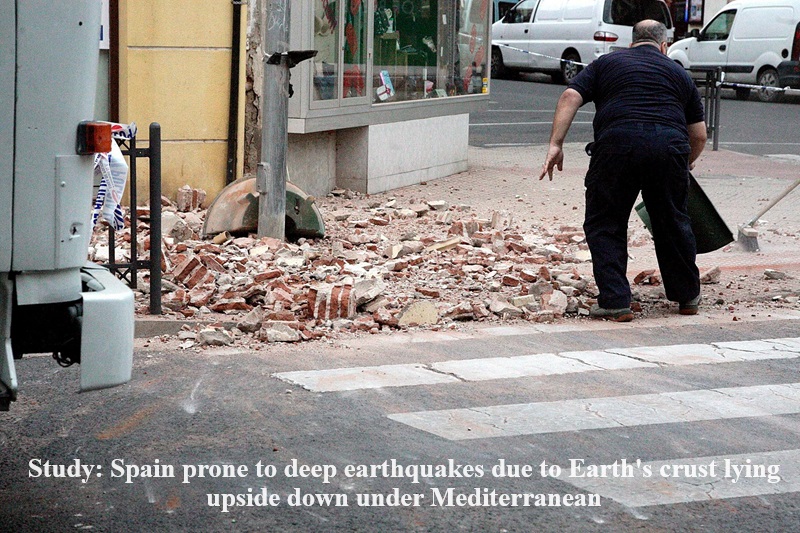
In a recent investigation, it has been determined that Spain continues to be susceptible to infrequent and profound earthquakes due to the presence of a subducted tectonic plate beneath the Earth’s crust.
According to seismographic data, during the gradual collision between Africa and Eurasia, a segment of the Earth’s surface became inverted deep within the Mediterranean region.
Geologists Daoyuan Sun from the University of Science and Technology of China and Meghan Miller from the Australian National University highlighted that since 1954, there have been five significant deep-focus earthquakes occurring in close proximity to the Spanish city of Granada, each at depths exceeding 600 kilometers.
Traditionally, earthquakes occurring at such considerable depths are succeeded by notable aftershocks. However, upon analyzing seismic data from Spain’s 2010 earthquake, Sun and Miller observed an absence of aftershocks.
When tectonic plates beneath the Earth’s surface collide, they typically undergo displacement, with one plate sliding beneath the other—a phenomenon known as subduction. These collisions may result in the destruction of the descending plate and the upliftment of the Earth’s crust, contributing to the formation of mountains and the interlocking of the two plates.
Alternatively, the interacting crustal plates may remain distinct but become stacked as a single slab, gradually descending deeper into the Earth’s mantle. This process is exemplified at the boundary between the African and Eurasian plates, where the Mediterranean seafloor is gradually subsiding beneath Europe.
During the 2010 earthquake in Granada, seismic waves exhibited an unusually prolonged duration and an additional phase of activity. This phenomenon occurred because the seismic waves were traveling at a slower pace, particularly at the base of the Alboran slab rather than its surface.
Geologist Daoyuan Sun noted, “A significant amount of water has been carried down to the mantle transition zone, indicating a relatively cold slab.” He further explained that to maintain the slab’s coolness despite the relatively youthful age of the seafloor in the western Mediterranean, the subduction velocity must be moderately fast, approximately 70 millimeters per year.

Post Your Comments